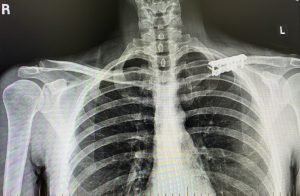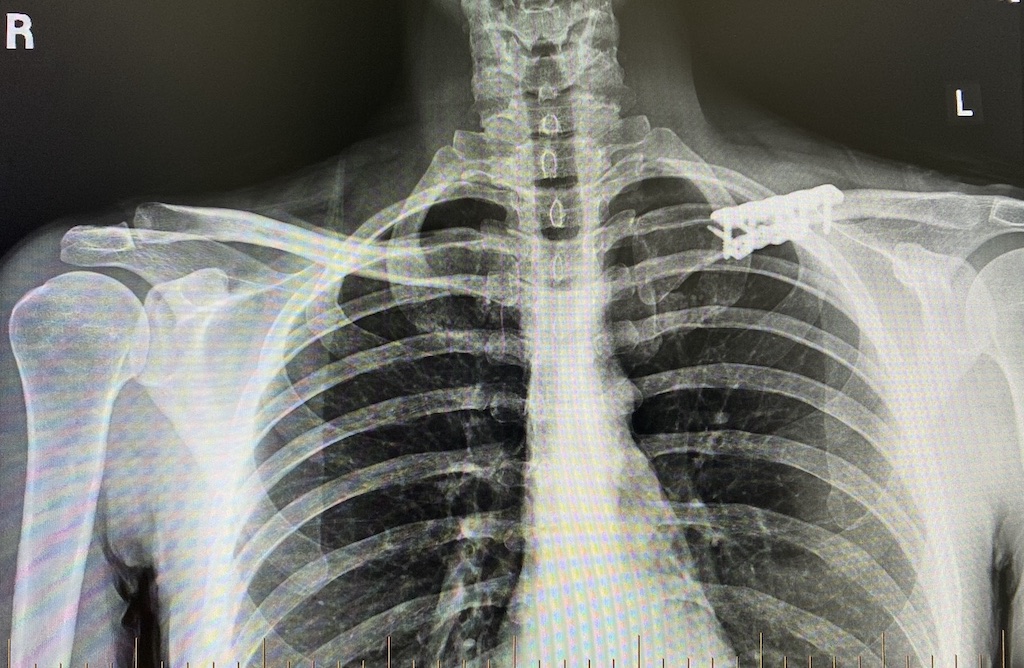Background: Clavicle reduction osteotomies are the only method to feminine the shoulders by reducing their width and softening their square shape. It is typically performed in a bilateral fashion reducing both shoulders during the same surgery. While this poses challenges in the recovery process due to the limited arm motion required, it does offer efficiency due to only needing one surgery.
There are, however, a small number of patients that choose to perform the surgery one shoulder at a time. While not being the most efficient way to reduce one’s shoulders it does have its own advantages. It makes the recovery easier as one arm is left free to do most of the work of everyday activities. While not shortening the length of time needed for the bone to heal and the return of normal arm motion, it also allows the use of a sling or elbow band to rest/stabilize the arm in the early healing period. (which is not done in bilateral surgery as slings are too cumbersome) It also allows the surgery to be done as an outpatient procedure.
An interesting aesthetic benefit of the staging the surgery is that the patient serves as their own control study. With a reduced and non-reduced shoulder the changes from the procedure can be readily seen compared to the non-operated side.
Case Study: This female desired to have her square shoulders reduced but only one at a time. She was small in height but had a bideltoid distance of 47cms. In staging her surgery she chose to do her non-dominant left side first. This was also her longer asymmetric side which occurs more commonly on the left side.



While not everyone will choose to stage their clavicle reduction osteotomies it does have its recovery benefits. It would be particularly suited to the patient who travels for surgery without their own support/assistance after the surgery. The second stage could be performed 3 months after the first procedure but the interval between the two procedures is up to the patient’s preference.
Case Highlights:
1) Shoulder reduction by clavicular reduction osteotomies is typically done in a bilateral fashion which has its challenges in the recovery.
2) One can choose to do one shoulder at a time which has the advantages of an easier recovery even though it needs to be done twice.
3) A staged shoulder reduction is typically done 3 months apart but the timing interval is up to the patient.
Dr. Barry Eppley
Indianapolis, Indiana





